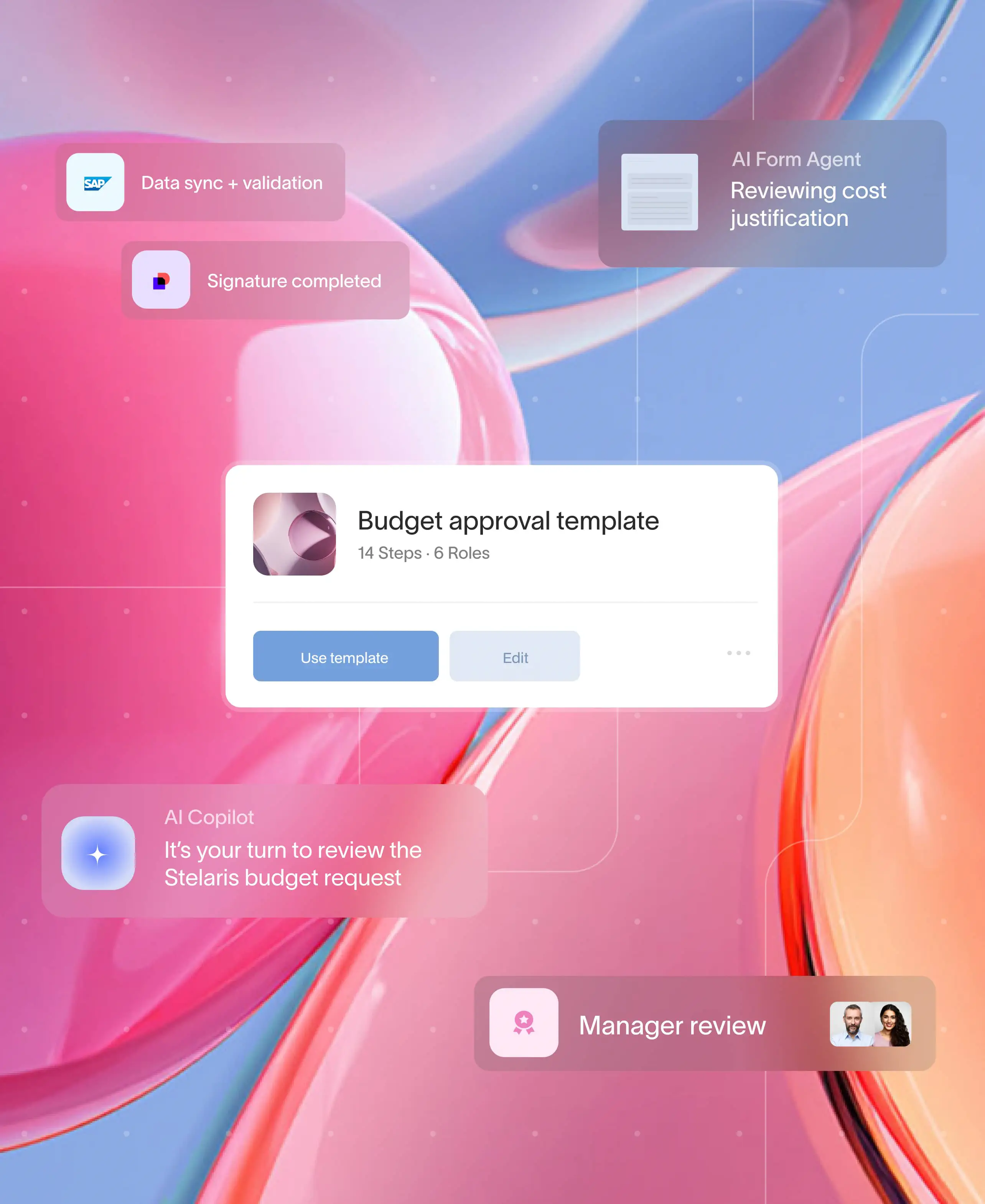
Keeping customers engaged is essential for long-term business success. Businesses that actively measure and improve customer engagement build stronger relationships, increase customer loyalty and drive higher revenue. A customer engagement survey is one of the most effective ways to understand how customers interact and engage with your business, their level of satisfaction, and areas for improvement.
Customer engagement isn't just about interactions; it directly influences customer retention, brand advocacy, and business growth. When customers feel valued, they are more likely to continue using a product or service, refer it to others, and provide valuable feedback that helps shape future business decisions. By conducting a customer engagement survey regularly, businesses can identify trends, address concerns, and implement strategies that enhance the overall customer experience.
In this blog, we will explore the most important customer engagement survey questions, and how Moxo helps service-based businesses strengthen client relationships.
Metrics to identify customer engagement
Measuring customer engagement requires tracking key metrics that provide insight into how customers interact with a business. These metrics help businesses understand customer behavior, identify areas for improvement, and refine their customer engagement strategies.
Here are some of the most commonly used customer engagement metrics:
- Net promoter score (NPS) – Measures customer loyalty by asking how likely a customer is to recommend your business to others.
- Customer satisfaction score (CSAT) – Assesses overall customer satisfaction based on their experience with your product or service.
- Customer effort score (CES) – Evaluates how easy it is for customers to interact with your business, such as resolving an issue or completing a transaction.
- Retention rate – Tracks the percentage of customers who continue to do business with your company over time.
- Churn rate – Indicates the percentage of customers who stop using your product or service within a given period.
- Engagement rate – Measures customer interaction with content, such as email open rates, click-through rates, and social media engagement.
- Time spent using the product or service – Analyzes how frequently and for how long customers engage with your offerings.
These metrics provide valuable insights into customer behavior and preferences. By analyzing this data, businesses can make informed decisions on how to improve customer engagement and experience.
Using surveys to assess and improve customer engagement
While engagement metrics offer quantitative insights, customer engagement surveys provide qualitative feedback that reveals the 'why' behind the numbers. By asking targeted questions, businesses can uncover specific pain points, identify customer expectations, and refine their strategies to enhance the overall experience.
Below are key customer engagement survey questions categorized to help businesses gain deeper insights into customer satisfaction, communication effectiveness, and overall engagement.
Customer engagement survey questions
A well-structured customer engagement survey helps businesses gather actionable insights into customer experiences, expectations, and satisfaction levels. To make the survey effective, questions should be categorized based on different aspects of engagement. Below are key customer engagement survey questions divided into relevant categories.
Overall satisfaction
Understanding overall satisfaction is essential to measuring customer sentiment and identifying areas for improvement in engagement and retention.
- How satisfied are you with our product or service?
- How likely are you to continue using our product or service?
- Would you recommend our company to a friend or colleague?
- How well does our business meet your expectations?
- On a scale of 1-10, how would you rate your overall experience with us?
Product or service experience
Assessing how well your product or service meets customer needs helps refine offerings and improve customer retention.
- How well does our product or service meet your needs?
- Have you encountered any challenges while using our product or service?
- What features do you find most valuable?
- What improvements would you like to see?
- How would you describe your experience using our product or service?
Customer support and communication
Effective communication and responsive support play a crucial role in enhancing customer satisfaction and engagement.
- How satisfied are you with the responsiveness of our support team?
- How easy was it to find the information you needed?
- Was your issue resolved to your satisfaction?
- Do you feel our company communicates with you effectively?
- How would you rate the helpfulness of our support team?
Brand perception and loyalty
Evaluating customer sentiment toward your brand helps gauge loyalty, advocacy, and competitive positioning.
- How would you describe our brand in a few words?
- Do you feel a strong connection with our company?
- What makes you choose our company over competitors?
- Have you recommended our brand to others? Why or why not?
- What could we do to improve your overall experience?
Engagement and interaction
Understanding how customers interact with your business provides insight into engagement trends and content effectiveness.
- How often do you interact with our brand through emails, social media, or customer support?
- Do you find our content and communications useful?
- What type of information or updates would you like to receive from us?
- Have you attended any of our webinars, events, or training sessions?
- What engagement channels do you prefer when interacting with our business?
Feedback and improvement
Gathering direct feedback allows businesses to refine customer engagement strategies and enhance satisfaction.
- What do you like most about our product or service?
- What do you like least about our product or service?
- How can we improve your experience with our company?
- Is there anything we could do to exceed your expectations?
- What additional features or services would you like us to offer?
By structuring your customer engagement surveys with these targeted questions, businesses can gain deeper insights into customer needs and make data-driven decisions to enhance
Streamlining customer engagement surveys with Moxo
Collecting and managing customer engagement data can be challenging without the right solutions. Moxo simplifies this process by enabling businesses to embed customer surveys into their client interactions using its integrated forms.
- Integrated survey collection – Moxo’s secure forms allow businesses to gather customer feedback as part of their service workflows.
- Automated workflows – Businesses can trigger surveys at key engagement points, ensuring timely feedback collection with minimal manual effort.
- Centralized client engagement – Customer responses are captured within a single hub, making it easier to track insights and follow up.
By leveraging Moxo’s service orchestration platform, businesses can streamline customer engagement, collect valuable insights in real-time, and optimize strategies for long-term success.
How Moxo helps service-based businesses engage with their customers
Service-based businesses rely on strong customer relationships to drive retention and long-term success. Engaging with customers effectively requires a seamless communication process, efficient service delivery, and personalized interactions. Moxo’s service orchestration platform provides a client interaction hub that helps businesses enhance customer engagement at every touchpoint.
Here’s how Moxo supports service-based businesses in improving customer engagement:
- Centralized communication – Moxo unifies all client interactions into a single platform, making it easier to manage conversations, share updates, and respond to inquiries in real-time.
- Secure document sharing and collaboration – Businesses can exchange documents securely within Moxo’s platform, ensuring a smooth and transparent customer experience.
- Automated collaborative workflows – Moxo streamlines repetitive processes, allowing businesses to focus on customer relationships instead of administrative tasks.
- Integrated communication channels – Moxo supports chat, voice calls, and video meetings, ensuring businesses can engage with customers through their preferred communication methods.
- Real-time notifications and updates – Customers receive timely updates and reminders, reducing delays and improving their overall experience with the business.
- Integration capabilities – Moxo integrates with various business tools and systems, allowing companies to connect their existing CRM, payment solutions, and document management platforms for a seamless workflow.
By leveraging Moxo’s capabilities, service-based businesses can simplify interactions, improve response times, and create an engaging customer experience. Get started with Moxo to streamline efficient service delivery and drive customer engagement.
Read more: Successful customer engagement examples
Conclusion
Customer engagement is a key driver of business growth, influencing customer satisfaction, loyalty, and retention. A well-structured customer engagement survey allows businesses to assess how effectively they are meeting customer expectations and identify areas for improvement. By tracking essential engagement metrics and asking the right questions in your customer engagement survey, businesses can make informed decisions that enhance the overall customer experience.
For service-based businesses, maintaining strong client relationships requires seamless communication, efficient service delivery, and personalized interactions. Moxo provides a comprehensive solution that simplifies engagement, streamlines workflows and ensures customers receive the best possible experience. By leveraging Moxo’s service orchestration platform, businesses can strengthen their customer relationships, engage with clients and drive long-term success.
Regularly evaluating customer engagement through surveys and implementing the right strategies will help businesses stay ahead in an increasingly competitive market. Get started with Moxo to streamline efficient service delivery and drive customer engagement.
FAQs
Why is a customer engagement survey important?
A customer engagement survey helps businesses understand how customers interact with your business, measure satisfaction levels, and identify areas for improvement. It provides valuable insights that can guide business decisions and enhance the overall customer experience.
How often should businesses conduct a customer engagement survey?
Businesses should conduct engagement surveys regularly, such as quarterly or bi-annually, to track changes in customer sentiment and make data-driven improvements. The frequency can vary depending on business goals and customer interaction levels.
What are the key metrics used to measure customer engagement?
Some of the most important engagement metrics include net promoter score (NPS), customer satisfaction score (CSAT), customer effort score (CES), retention rate, churn rate, engagement rate, and time spent using the product or service.
What types of questions should be included in a customer engagement survey?
A customer engagement survey should include questions related to overall satisfaction, product or service experience, customer support, communication, brand perception, engagement levels, and areas for improvement. Categorizing these questions allows businesses to conduct a segmented analysis, providing better visibility into specific pain points and enabling a streamlined approach to addressing each type of challenge effectively. This structured method ensures businesses can implement targeted improvements that enhance customer engagement and experience.
How does Moxo improve customer engagement for service-based businesses?
Moxo enhances customer engagement by providing a centralized communication hub, secure document sharing, automated workflows, integrated communication channels, real-time notifications, and seamless integration with business tools. These features help businesses streamline interactions and deliver a better customer experience.





